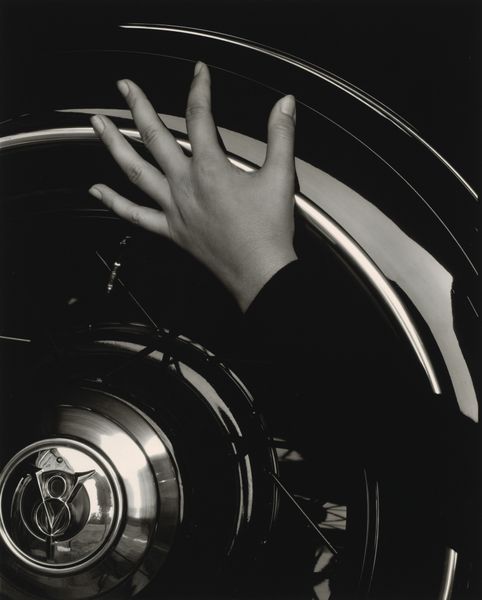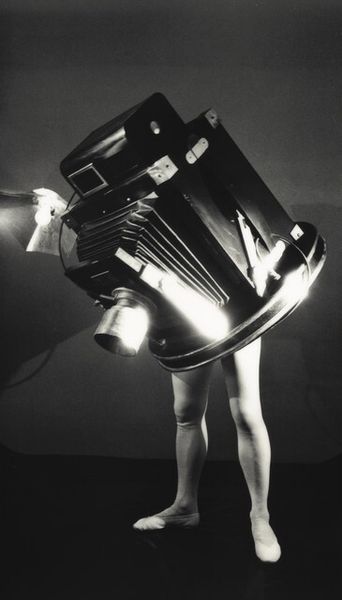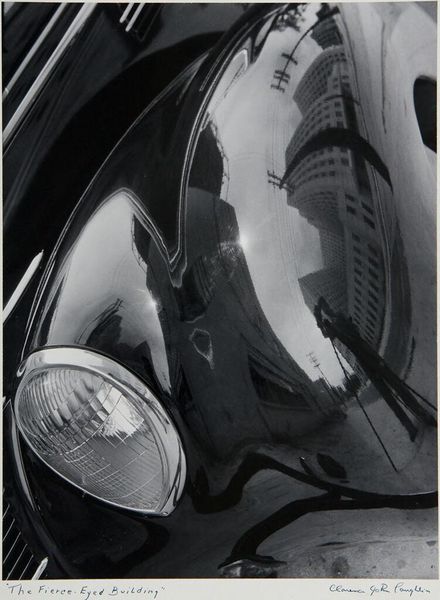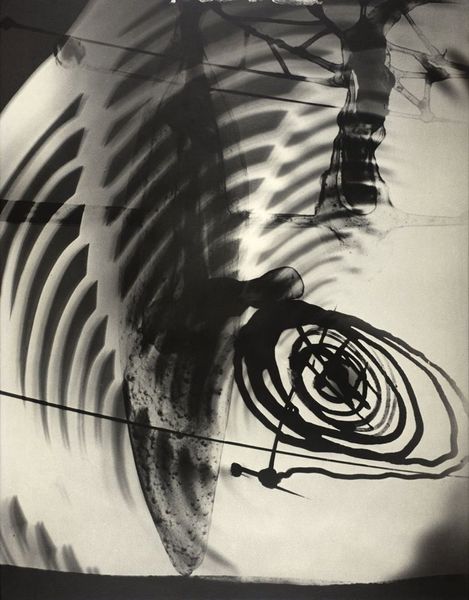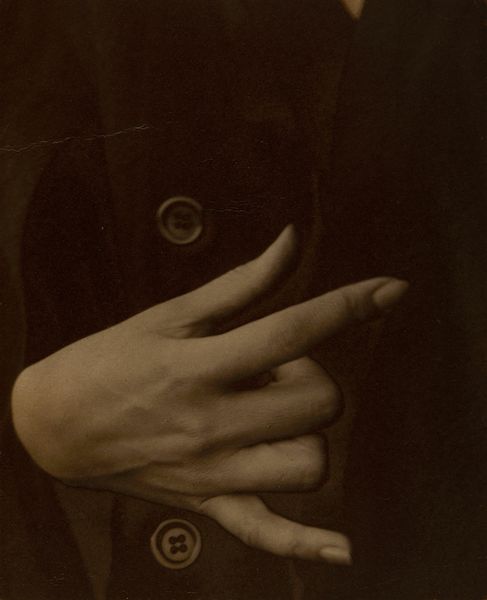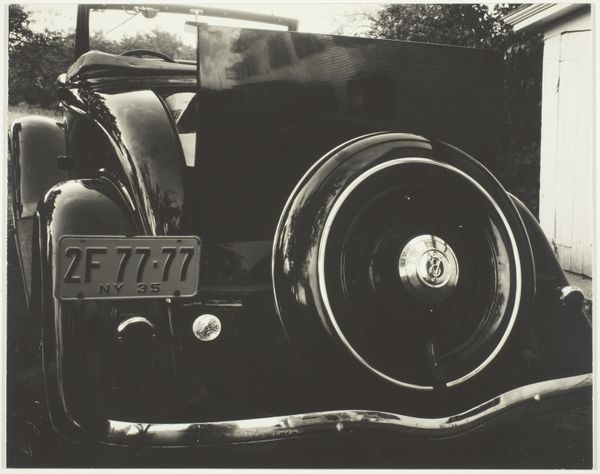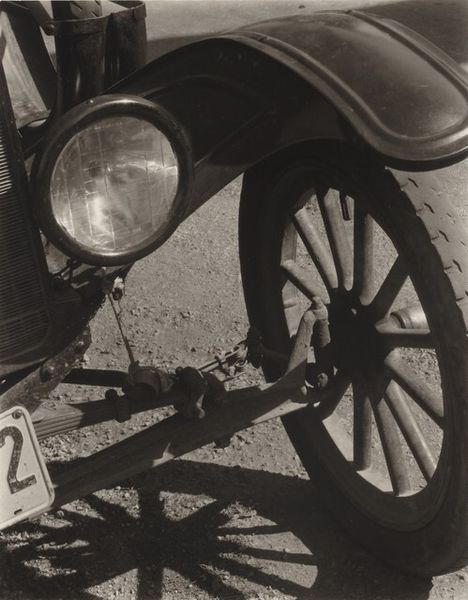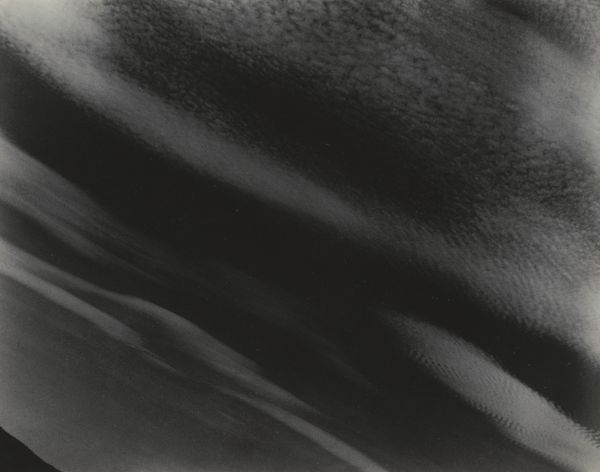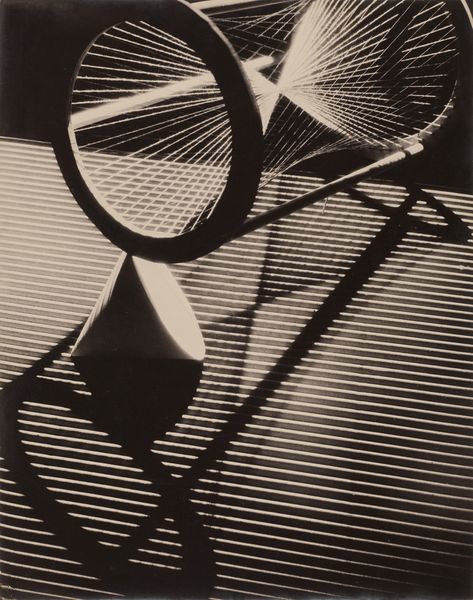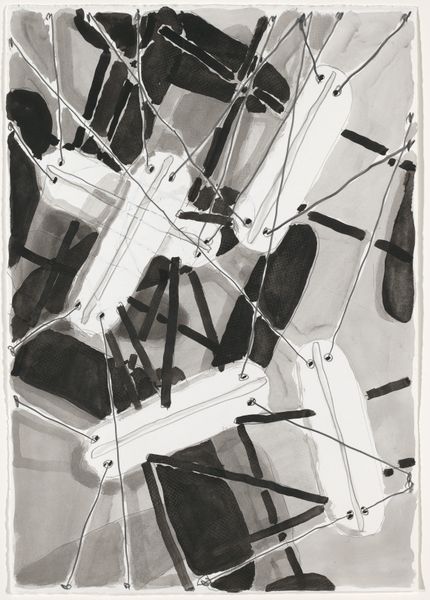
photography, gelatin-silver-print
#
portrait
#
precisionism
#
still-life-photography
#
black and white photography
#
photography
#
black and white
#
gelatin-silver-print
#
monochrome photography
#
monochrome
#
modernism
#
monochrome
Dimensions: sheet (trimmed to image): 24.2 x 19.1 cm (9 1/2 x 7 1/2 in.) mount: 51.7 x 41.8 cm (20 3/8 x 16 7/16 in.)
Copyright: National Gallery of Art: CC0 1.0
Curator: "Hand and Wheel" is a gelatin silver print made by Alfred Stieglitz in 1933. Editor: My first thought? It's surprisingly sensual for a picture of a wheel! There’s a starkness, sure, but the soft light on the skin against that dark metal… it whispers rather than shouts. Curator: Stieglitz, through his magazine "Camera Work" and his galleries, was a major advocate for photography as fine art. Here, he’s playing with the Machine Age aesthetic, elevating industrial objects to the realm of high art. He was deeply embedded in New York's art scene and shaped how photography was perceived within the art world. Editor: I see it! But also… isn’t this just a love letter to Georgia O'Keeffe? Her hand is so delicate and deliberate against the hard, glossy wheel. The bracelets even echo the circles of the wheel itself! It's a union of natural and man-made forms, reflecting her influence in his life, wouldn't you say? Curator: Definitely a tribute to O'Keeffe! She was, of course, his wife and a constant source of artistic inspiration. But let's not forget the larger context; the 1930s were a period of great industrial expansion in America. Stieglitz wasn't merely making a portrait; he was also commenting on the changing American landscape and our relationship with technology. It appeared, too, as one in a suite of photographs about O’Keeffe he produced in this period. Editor: You're right, it is bigger than just them. It speaks to a yearning for progress and modernity. But personally, I still can't get past the feeling of intimacy here. The closeness, the focus… it almost feels voyeuristic, like we’re intruding on a private moment of artistic and personal connection. It seems deeply heartfelt and intimate. Curator: It's interesting you say that. This gets at how Stieglitz helped steer photography’s artistic recognition! Photography offered a different lens for conveying a feeling of intimacy; in comparison to painting it could depict modern realities with a previously unknown immediacy. He would agree that it allows people to be so moved! Editor: That it does! Thanks to both the eye behind the camera, and, perhaps, the hand in front of it. Curator: Indeed. Stieglitz found beauty and emotion where others saw only steel and rubber, an achievement worthy of our contemplation today.
Comments
No comments
Be the first to comment and join the conversation on the ultimate creative platform.
